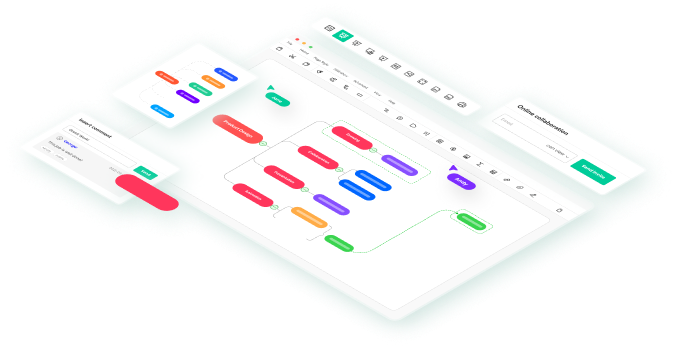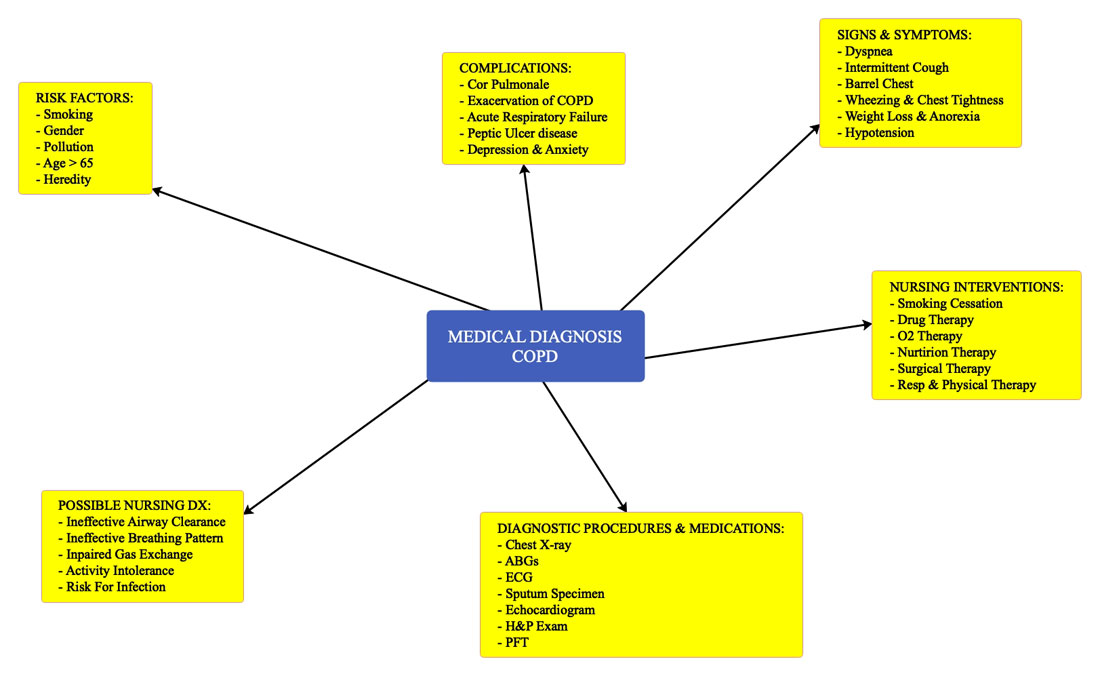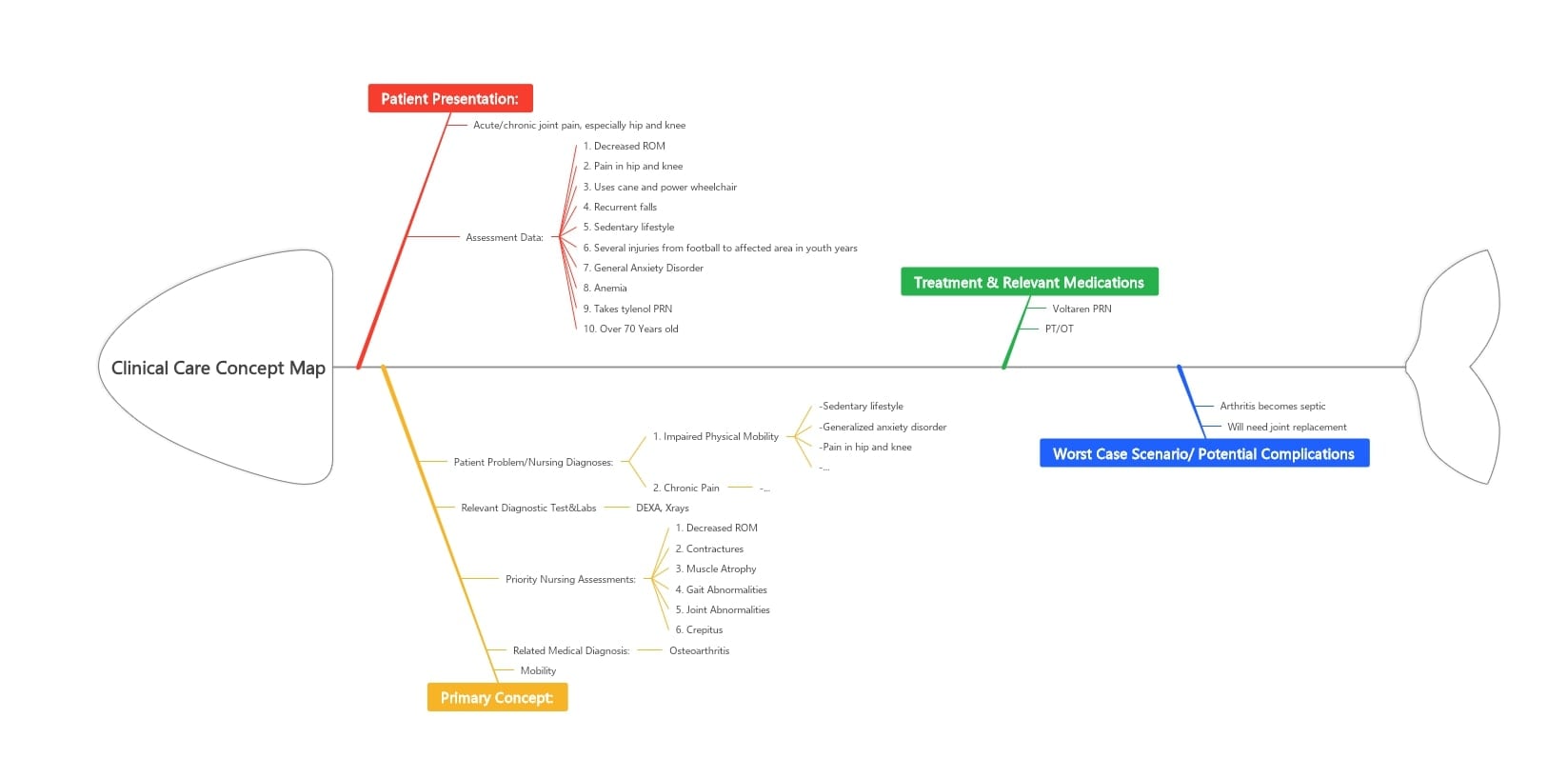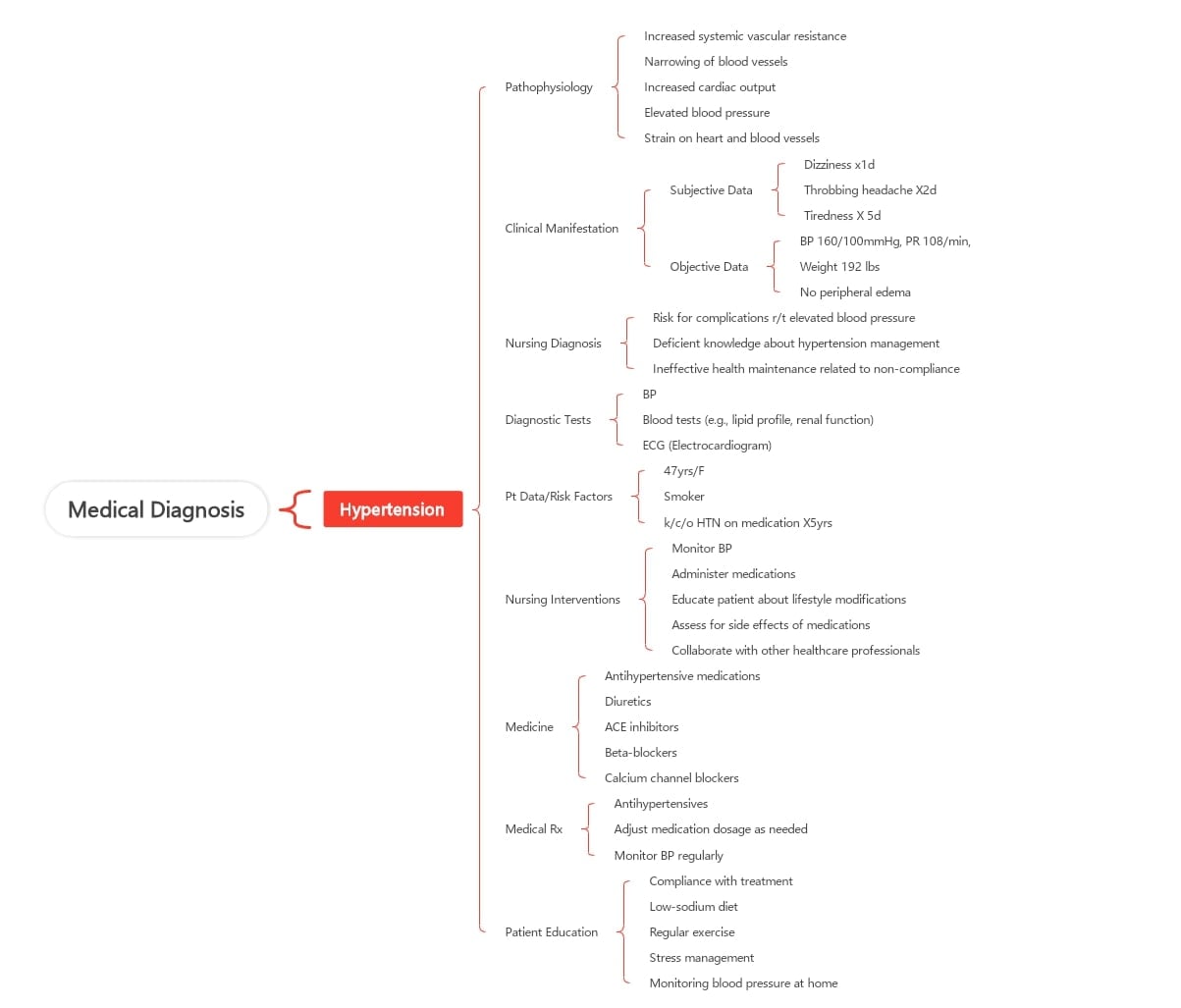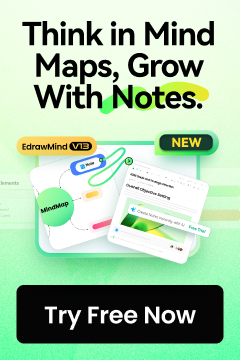
Nursing concept mapping is a graphical tool for defining patient issues, organizing assessment results, selecting relevant diagnoses and procedures, and assessing outcomes. Nursing students can effectively and efficiently devise strategies using the services and tools of this concept map.
Nursing concept maps can be analyzed as the following four types:
- Spider maps are the one that expands outwardly with sub-themes grouped around the element.
- Hierarchical maps are the ones that include essential information at the top of the map and group the information according to the order of importance.
- Flow charts are the maps that produce details as flow schemes.
- System maps organize flow charts-like model maps details. The maps contain inputs and outputs in addition to flow diagrams forms.
Examples of Nursing Concept Map
In the above nursing concept mapping example, we are looking into the - 'Nursing Management for Dextroamphetamine Therapy.' Here the concept map is divided into decision making, doing, and assessment. It covers the core concepts of this therapy from idea conception to evaluation. The concept map helps provide an overview of dextroamphetamine therapy and its processes.
Decision making covers key areas like - Nursing diagnosis, ethical or legal issues, reproductive factors, and economic factors. The concept map also emphasizes the importance of pre-assessment tests.
In this nursing concept mapping example, the medical diagnosis of chronic obstructive pulmonary disease. Concept map dive into discussing - various risk factors, diagnostic procedures and medications, complications, signs and symptoms, possible nursing DX, and nursing interventions.
The map examines various elements associated with a medical diagnosis. when it comes to chronic obstructive pulmonary disease the risk factors are - smoking, gender, pollution, old age, and the chance of it being hereditary.
Sign and symptoms which are clearly defined in the concept map are - excessive coughing, barrel chest, wheezing and tight chest, weight loss, anorexia, and hypertension.
SBAR is the abbreviation for the situation, recommendation, assessment, and background. It is a technique used to prompt communication and is widely used in the healthcare field. This nursing concept mapping example decodes SBAR communication techniques.
Under the situation, the map depicts - reporting about, the problem or condition for which one is calling about, and concerns. The background od the patient is important and key areas listed in the diagram are - diagnosis, medications, IV-s types and fluids, allergies, labels, code status, and other extremely relevant data.
After understanding the situation and the background, assessment and recommendation take place to ensure effective and proper communication and evaluation.
This nursing concept mapping example depicts the patient care plan. This plan consists of everything required for a patient's treatment and diagnosis from past medical history to identifying potential risk factors from their current lifestyle.
This example depicts various categories under patient care plan - diagnostics current history, risk factors, past medical history. medication list, patient data set, and assessment.
This helps ensure a patient is treated with the utmost care and that the treatment is inclusive of relevant healthcare criteria.
This nursing concept mapping example depicts the responsibilities of a circulating nurse. a circulating nurse is someone who assists in managing the nursing care of a patient during surgery. They also ensure that there are no breaches in the surgical aspects and coordinates the needs of the surgical team.
Diabetes Mellitus
Diabetes Mellitus is a long-term condition where the body can’t properly use or produce insulin, causing high blood sugar. It’s linked to genetics, lifestyle, and other health problems. Common signs include thirst, frequent urination, tiredness, blurred vision, and slow wound healing.
The diabetes mellitus concept map below shows the key risk factors, symptoms, tests, complications, and care strategies. The diagram helps organize the disease process, guide nursing care, and support patient education for better management and prevention of complications.
Postoperative Nursing Care
Postoperative Nursing Care helps patients recover safely after surgery by managing pain, checking vital signs, and supporting breathing and circulation. Nurses also watch for risks like infection, bleeding, or delayed healing.
A Postoperative Nursing Care concept map highlights key priorities, risks, and nursing interventions. It guides safe recovery, early complication detection, and patient education for better outcomes.
Chronic Kidney Disease
The chronic kidney disease (CKD) is a long-term condition where the kidneys slowly lose their ability to filter waste and balance fluids. It often develops from diabetes or high blood pressure and can cause fatigue, swelling, and reduced urine output.
The CKD concept map shows its causes, symptoms, tests, and complications, while also outlining treatments, nursing care, and lifestyle changes. It helps patients and providers work together to slow progression and improve quality of life.
Clinical Care Concept Map for Osteoarthritis
Osteoarthritis is a joint disease that causes pain, stiffness, and limited movement, often in the hips and knees. It usually develops with age, past injuries, or repeated strain, and can make daily tasks harder.
The osteoarthritis concept map shows key problems like joint pain, reduced mobility, and risk factors such as inactivity or falls. It also covers tests, treatments, and therapies to manage pain and improve independence, while noting possible complications like severe arthritis or joint replacement.
Medical Diagnosis Map For Hypertension
Hypertension is a long-term condition where blood pressure stays high, putting extra strain on the heart and blood vessels. It often shows no clear symptoms but can lead to heart disease, kidney problems, or stroke if not controlled.
The hypertension concept map outlines risk factors, symptoms, tests, treatments, and nursing care. It also emphasizes lifestyle changes like healthy eating, exercise, and stress management to help patients prevent complications and stay healthier.
Benefits of Nursing Concept Maps
Some of the most effective teaching methods are concept maps that help students accurately obtain the necessary details. A concept map is a method for learning that introduces people to learn meaningful problems.
Nursing concept maps are used as a way to incorporate theory and practice, case management, educational journals, and nursing students' study techniques. The use of the concept map approach in nursing students has been described as enhancing the feeling of success, self-confidence, and the skills to build a critical thinking capacity.
Furthermore, it was found that nursing students can more effectively recognize subjects they do not know, understand the subject better, and have a positive impact on their academic achievements.
The diagram illustrates four key areas of responsibility: prevention of infection, the psychological response, the behavioral response, and the culture of safety. Section culture of safety - medication safety, time out, skin preparation, count policy, and positioning practices.
Under the prevention of infection, the concept map elaborates upon - Traffic patterns, surgical team, surgical asepsis, and surgical attire.
Explore More Examples and Make Nursing Mind Maps for Free on EdrawMind
Creating a nursing concept map in EdrawMind is a simple way to organize patient data, diagnoses, interventions, and outcomes into a clear, visual structure. With ready-made templates and easy drag-and-drop tools, EdrawMind helps nursing students and professionals connect complex information step by step.
Step 1: Open EdrawMind
Launch the program and choose either a blank mind map or a pre-designed nursing concept map template.
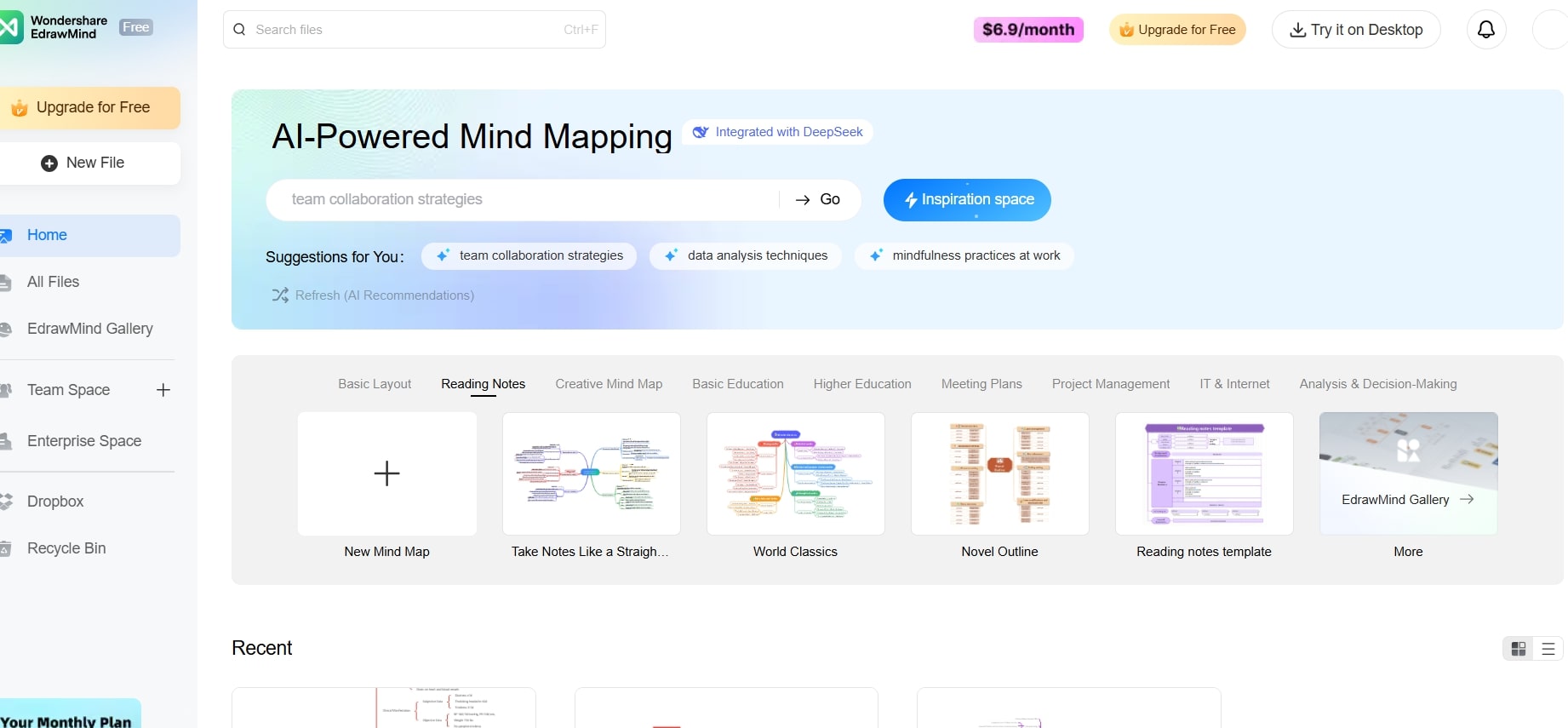
Step 2: Add the Central Theme
In the center node, type the main focus of your concept map. For example: Diabetes Mellitus, Postoperative Care, or Hypertension. This will be your starting point.
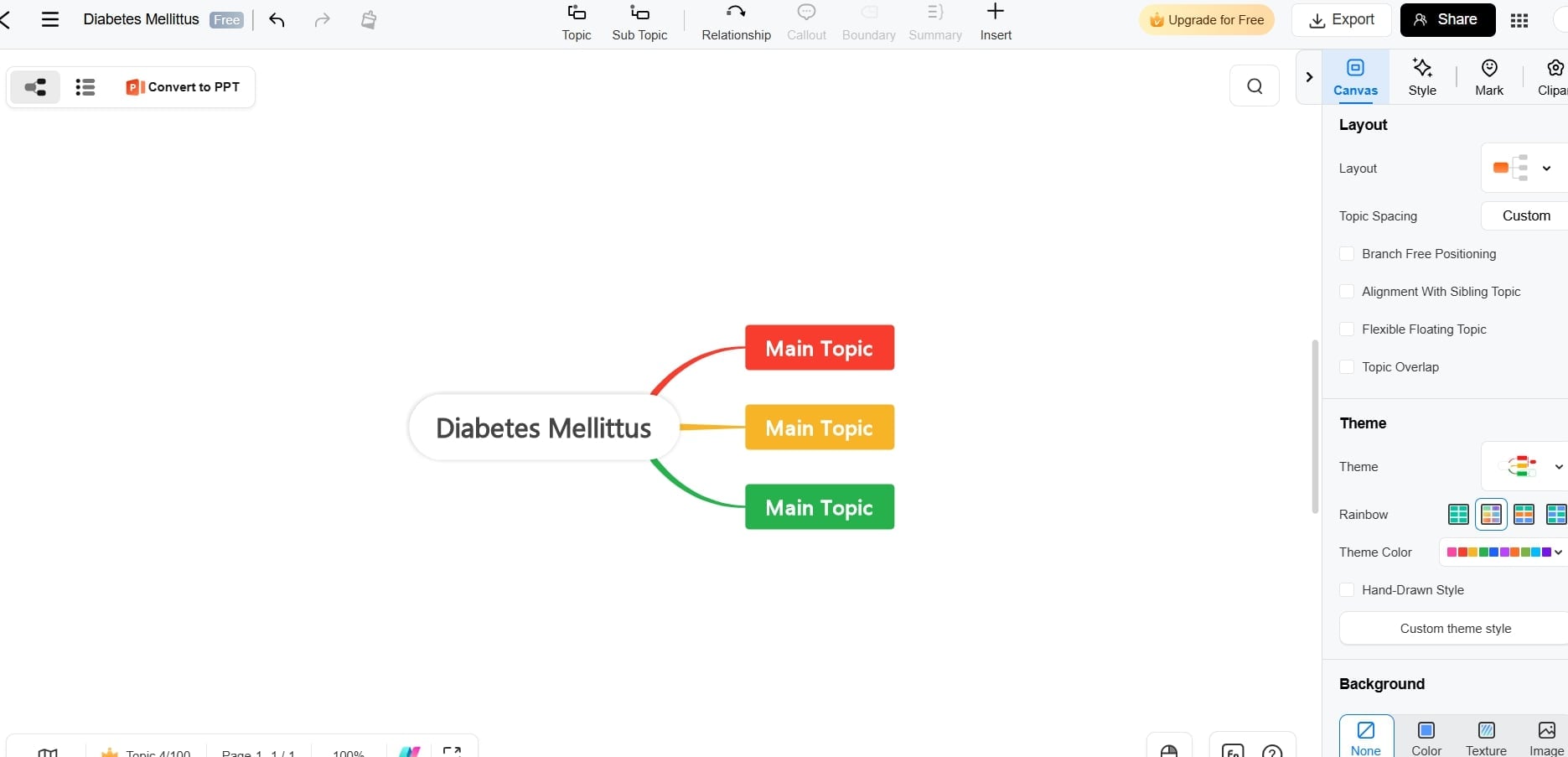
Step 3: Create Main Nursing Categories
Branch out from the center with major areas of care such as:
- Risk Factors / Etiology
- Signs & Symptoms
- Diagnostics
- Nursing Diagnosis
- Interventions
- Expected Outcomes
- etc.

Step 4: Expand with Sub-Branches
Break each main category into smaller details. For example, under “Risk Factors/Etiology,” you can add sub-branches that list risks and factors affecting the condition.

Step 5: Use Icons and Colors
You can apply shapes, icons, and colors to highlight risks, priorities, and outcomes, making your map clearer and easier to remember.
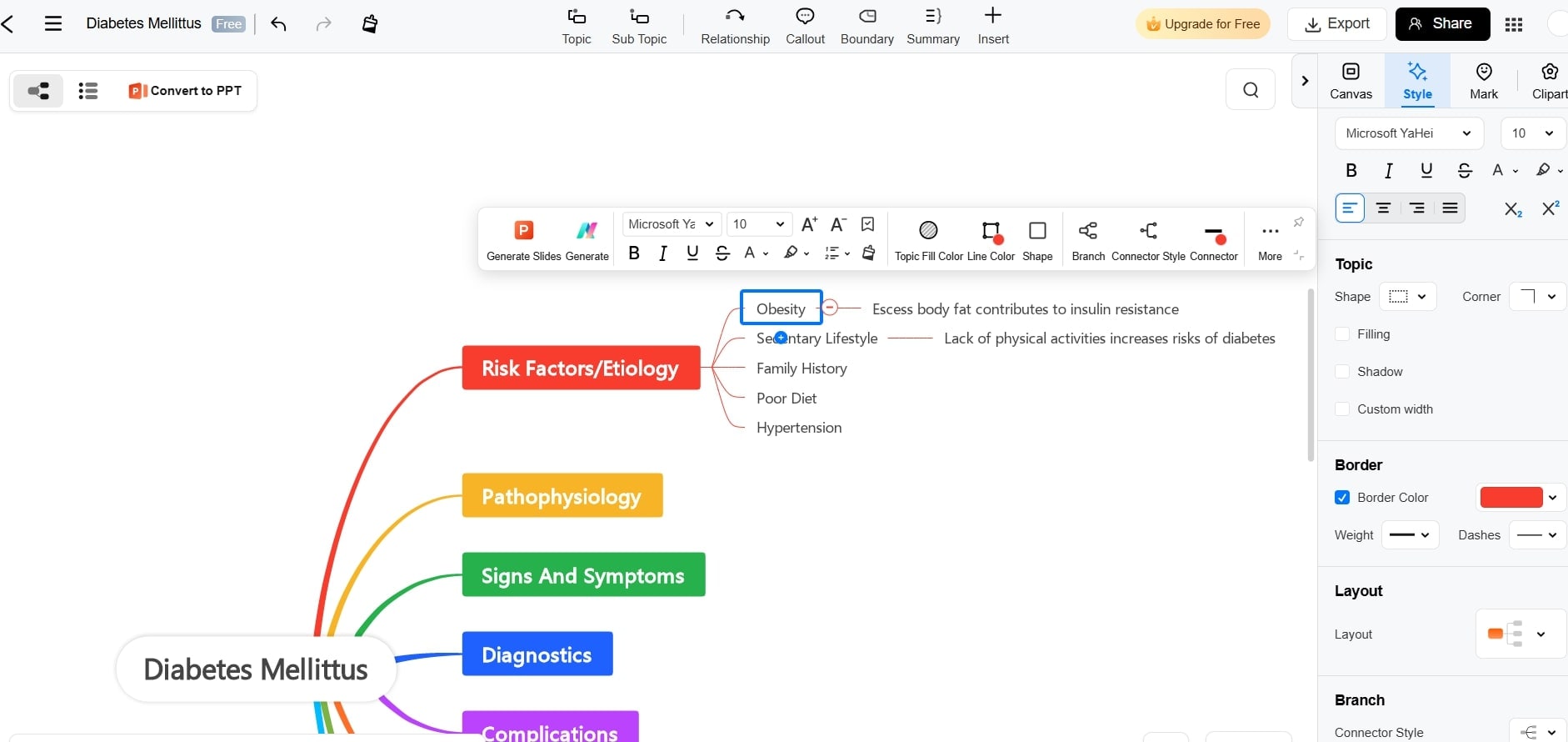
Step 6: Review and Refine
Check that your map flows logically. Ensure connections are clear, and adjust the layout for better readability.
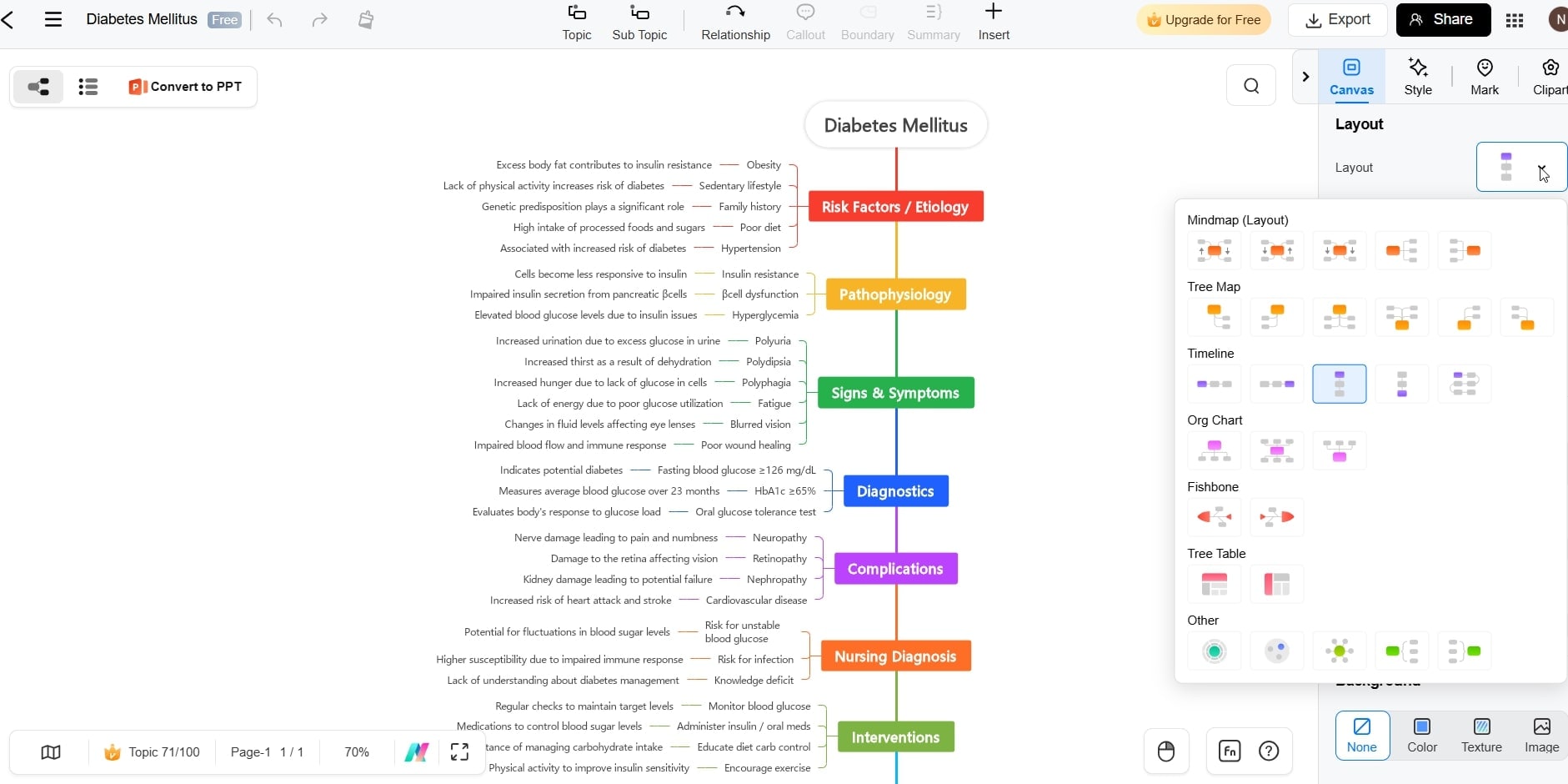
Step 7: Export And Download
Once finalized, export your nursing mind map in your desired format and download it for easy sharing, printing, or study use.
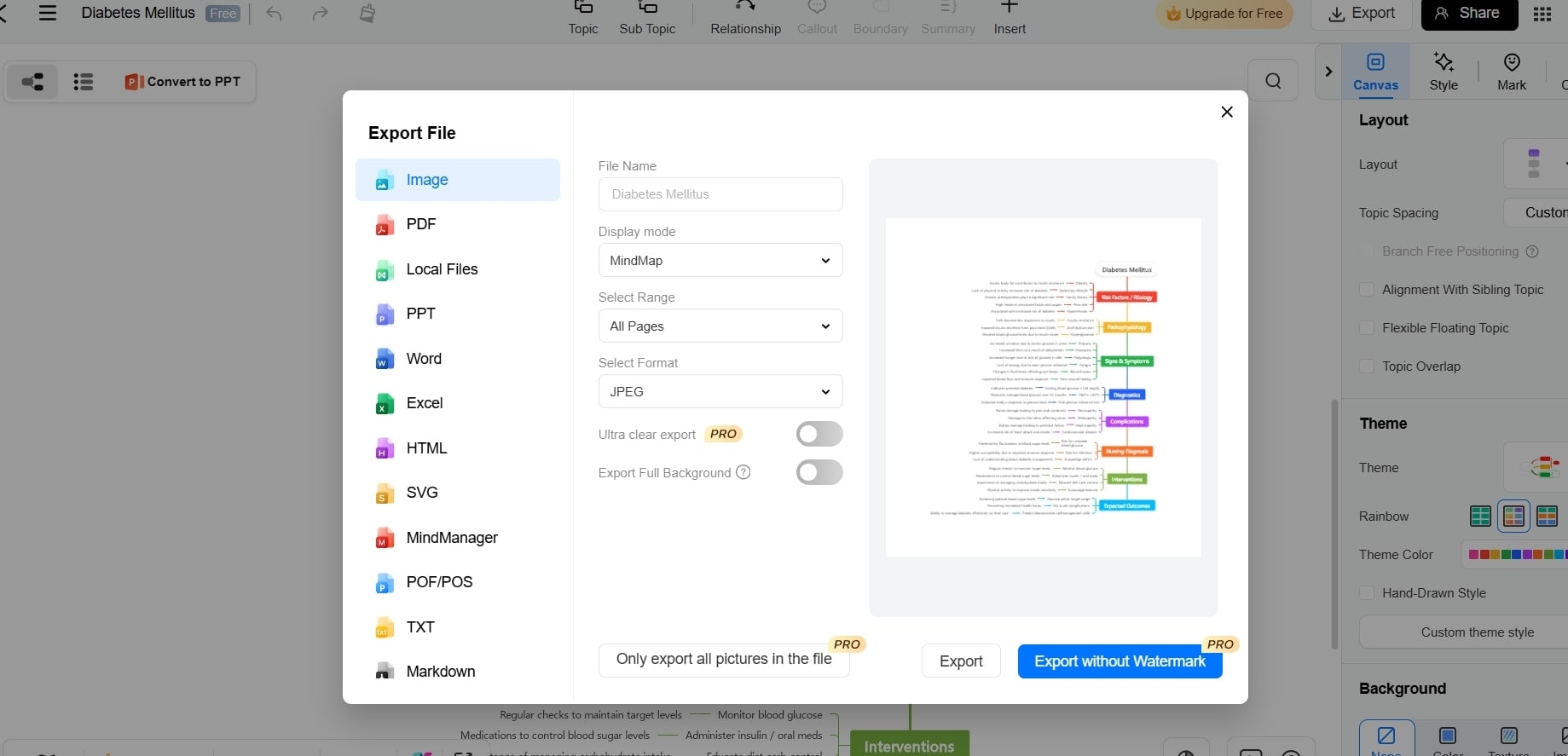
EdrawMind makes it easier to organize patient care data into a clear, visual flow. Instead of long notes, you’ll have a quick reference that connects assessment, diagnosis, interventions, and evaluation at a glance.



